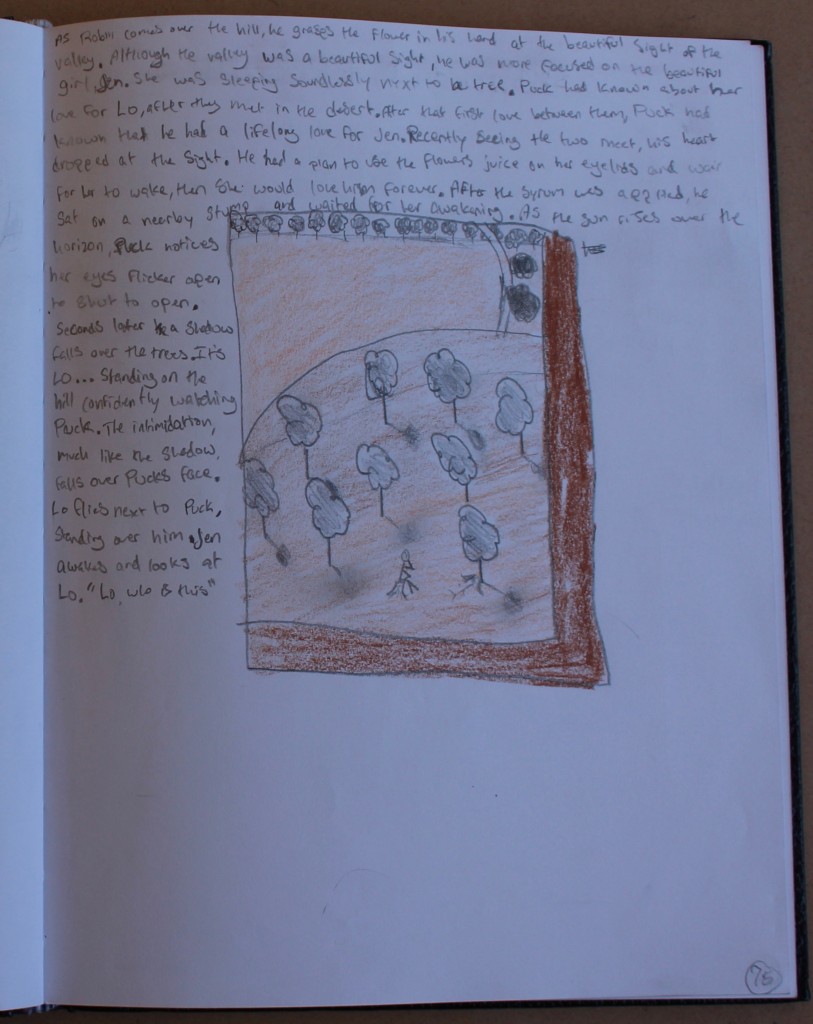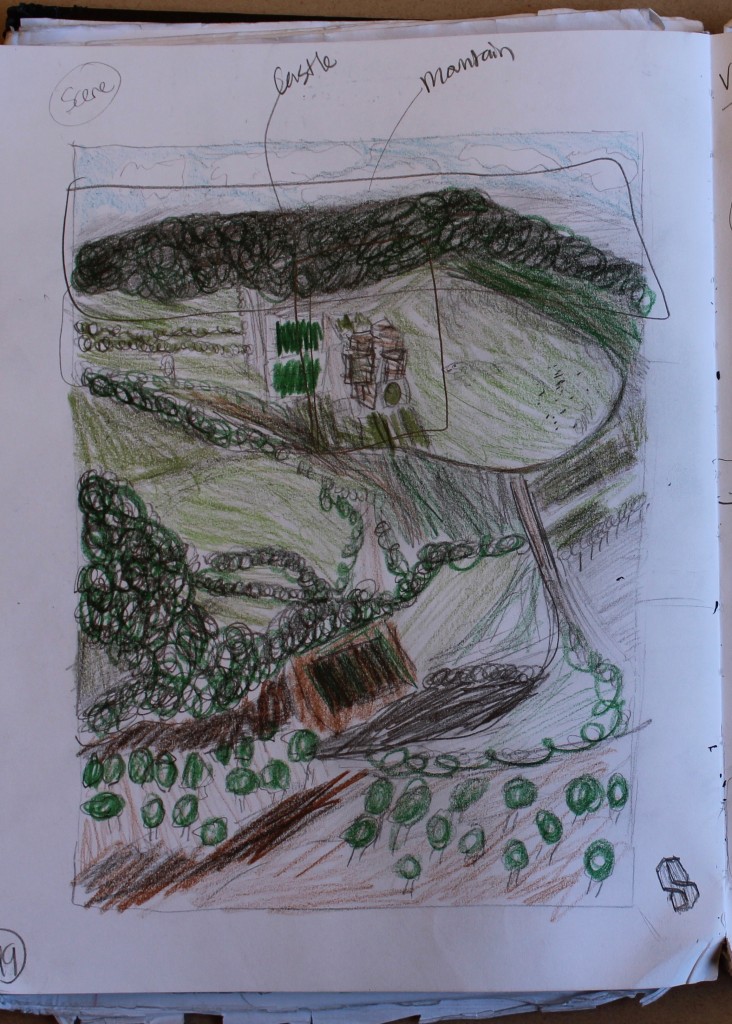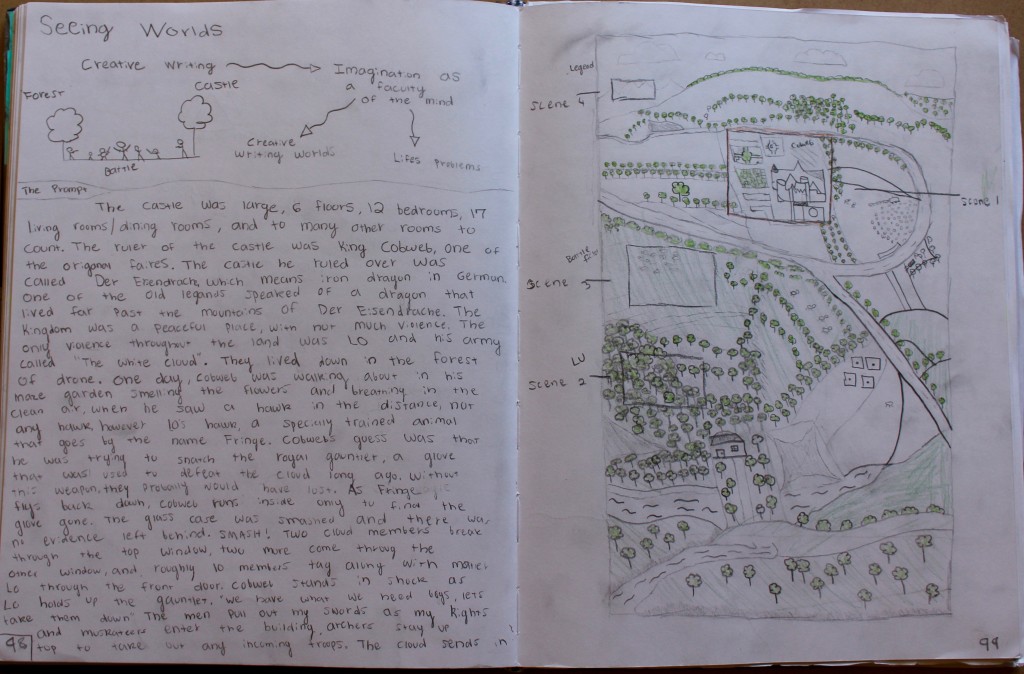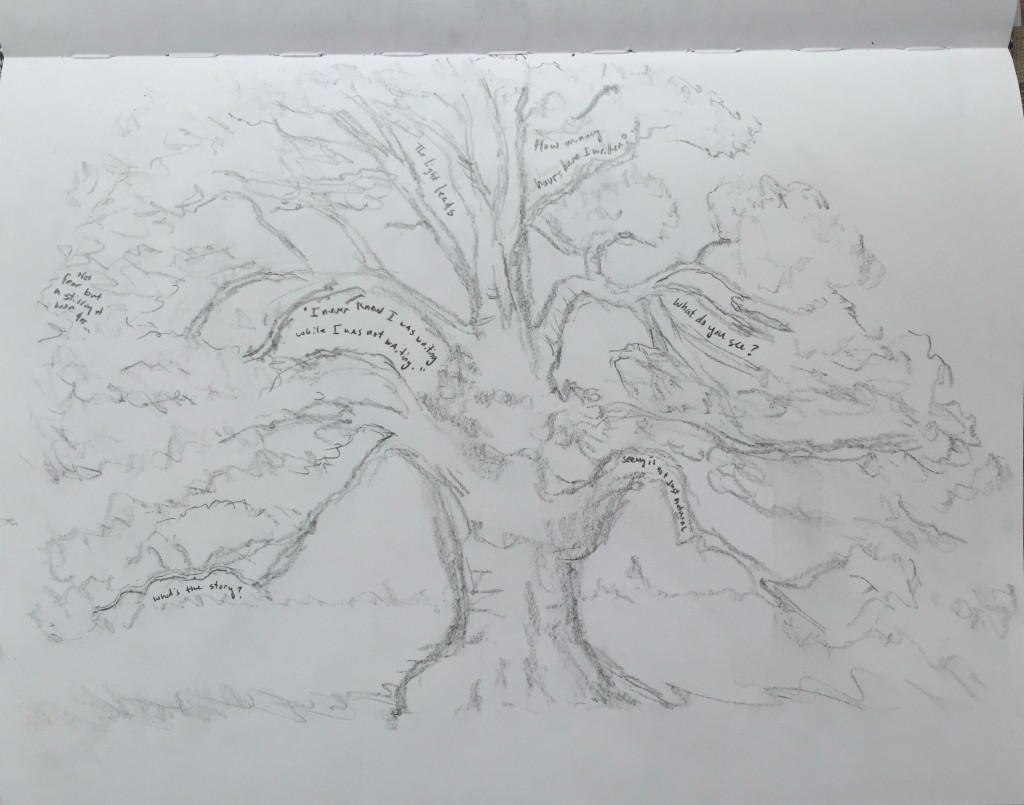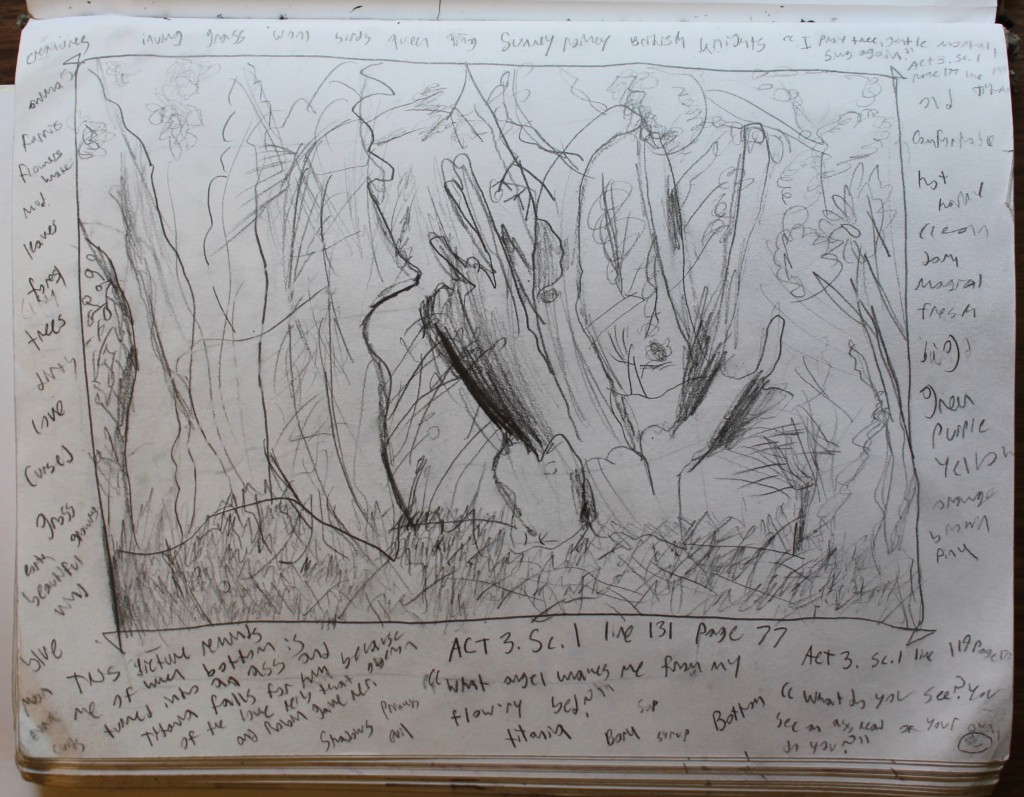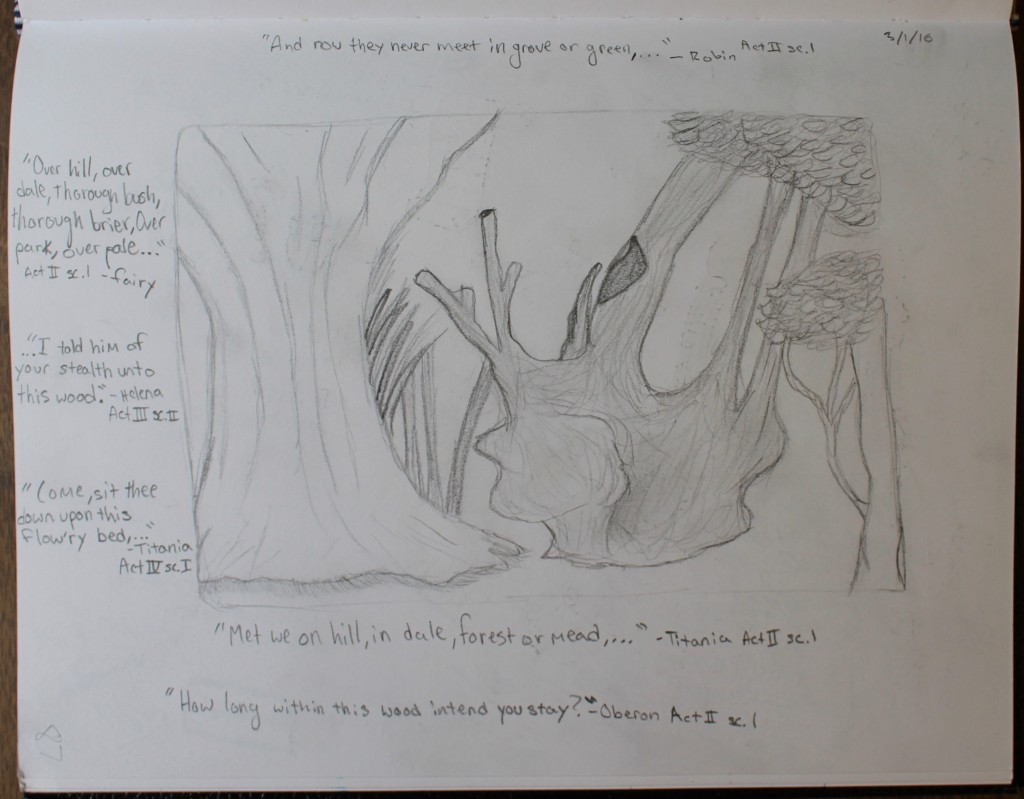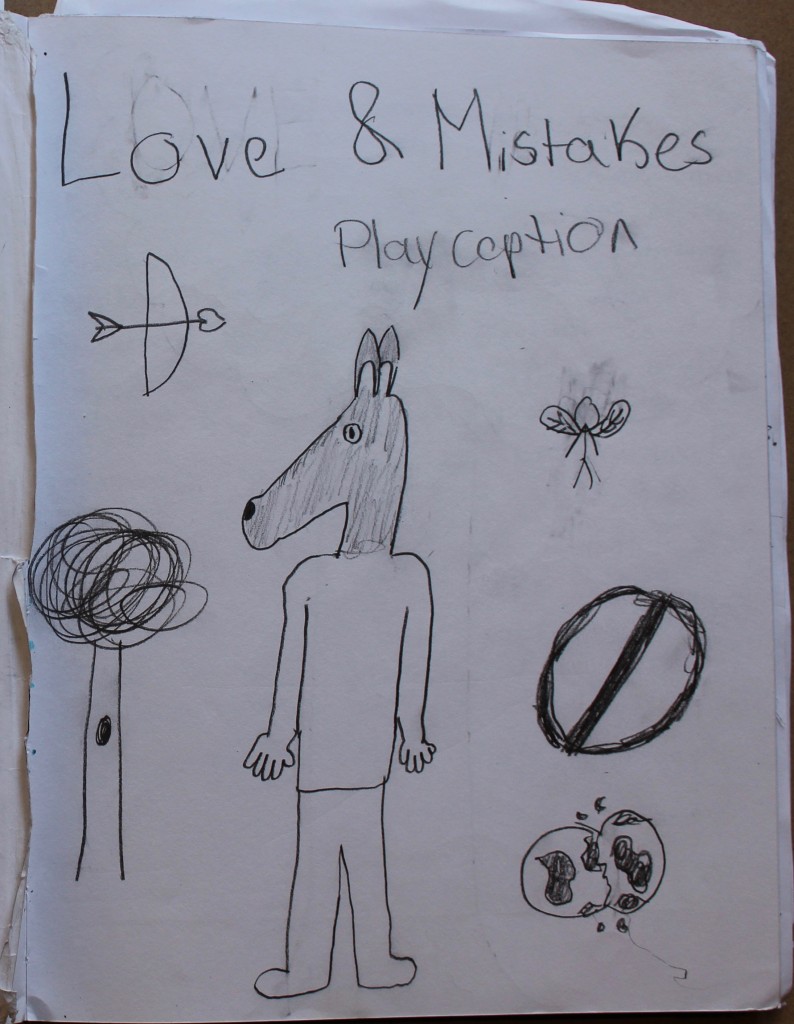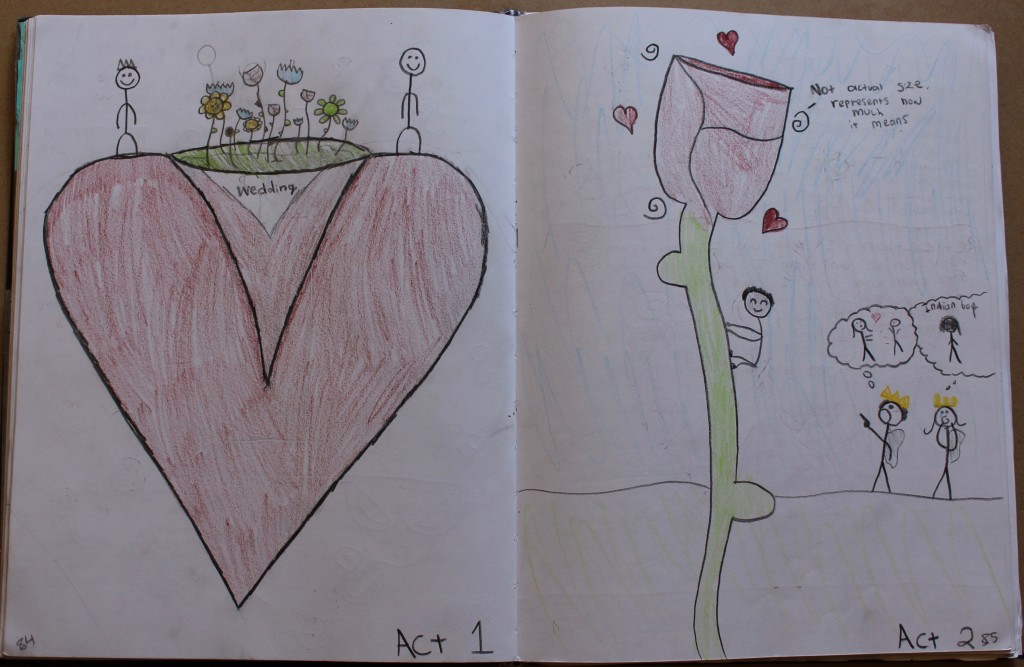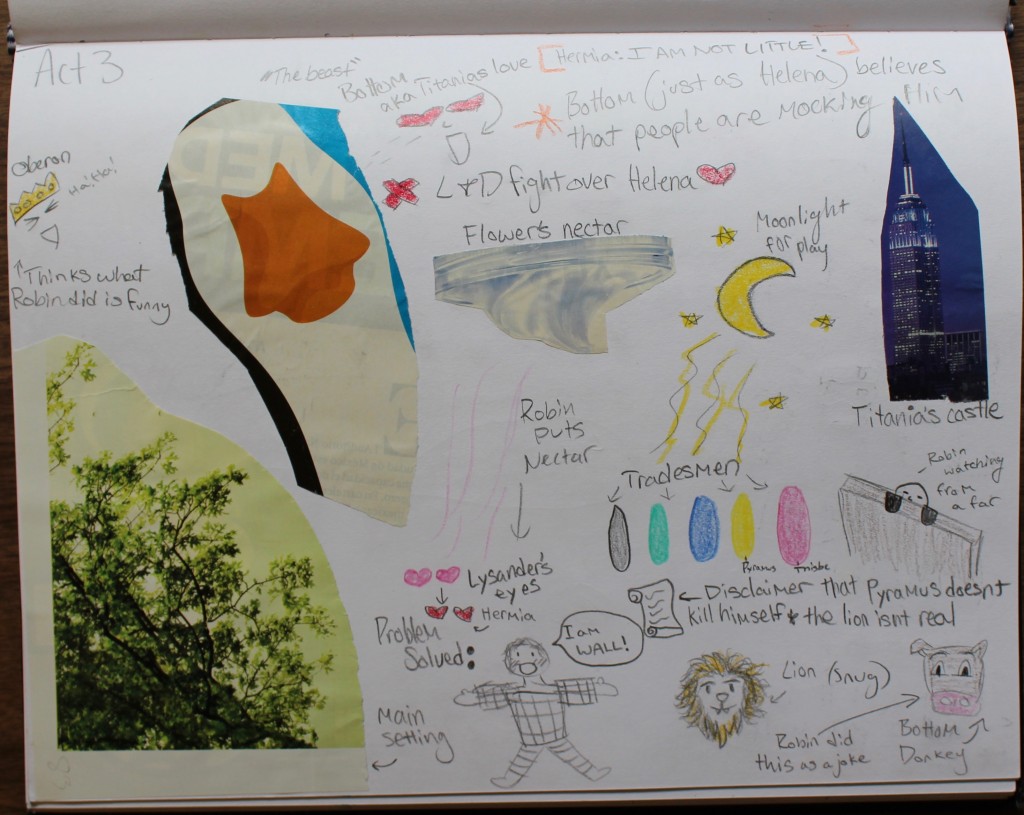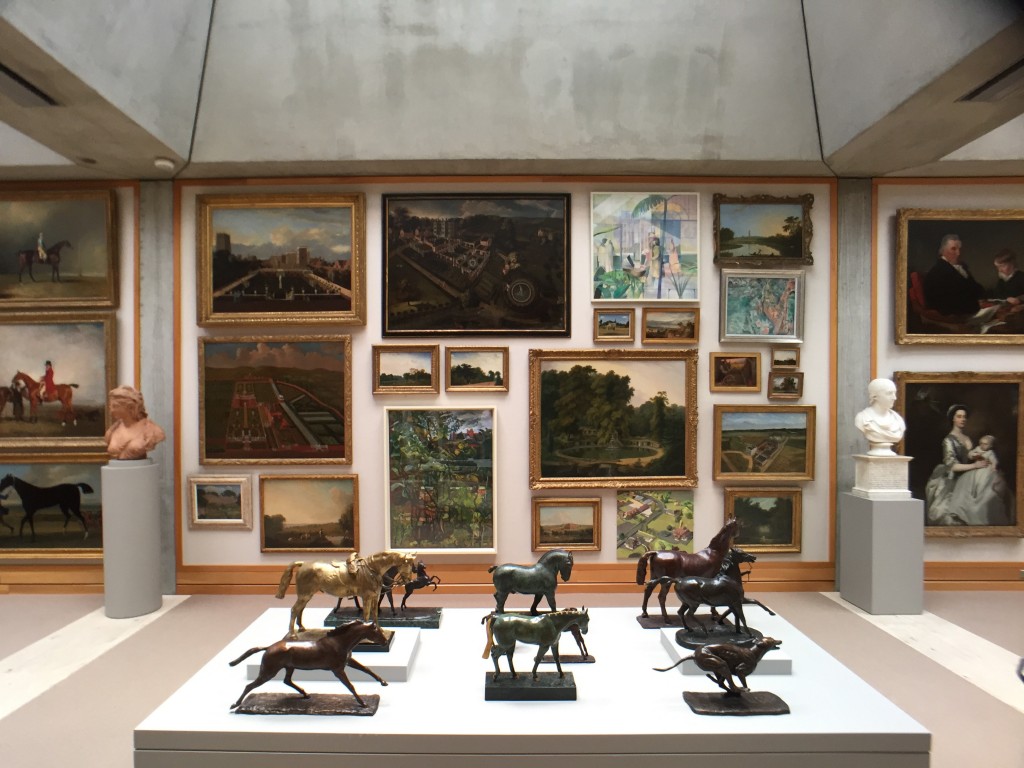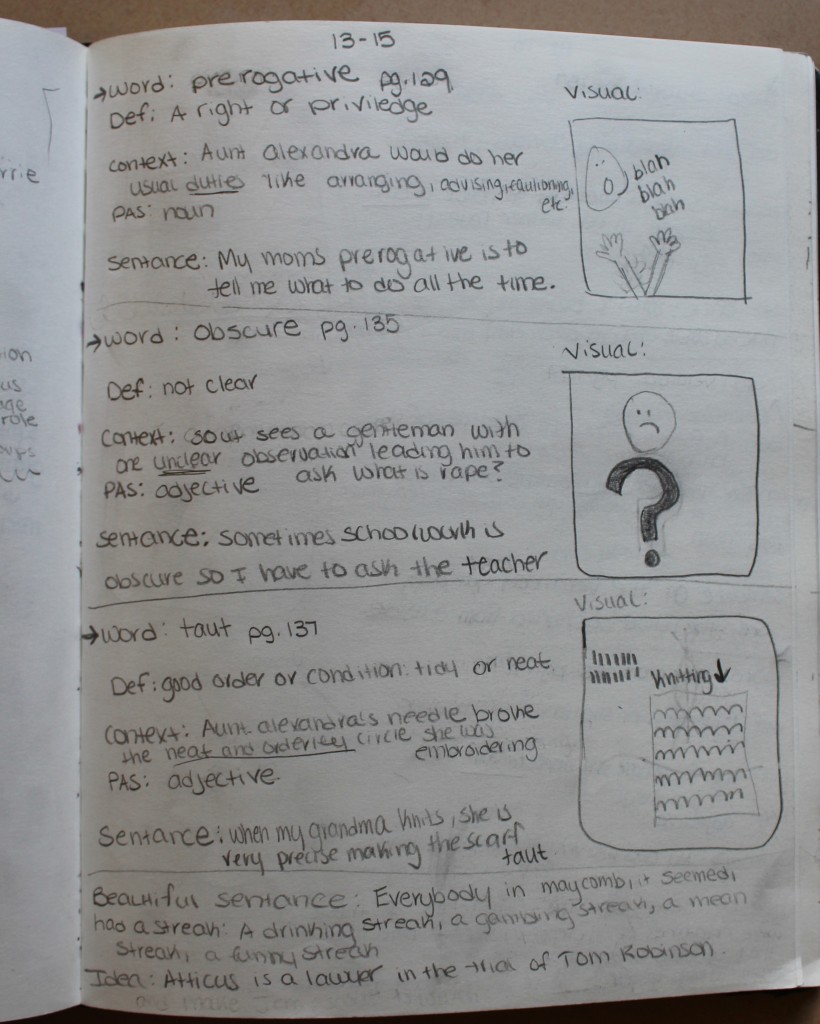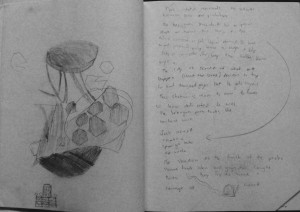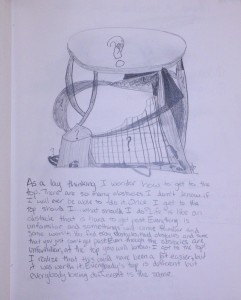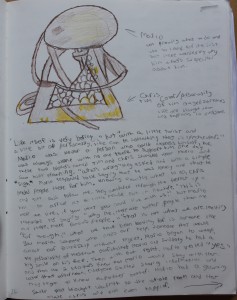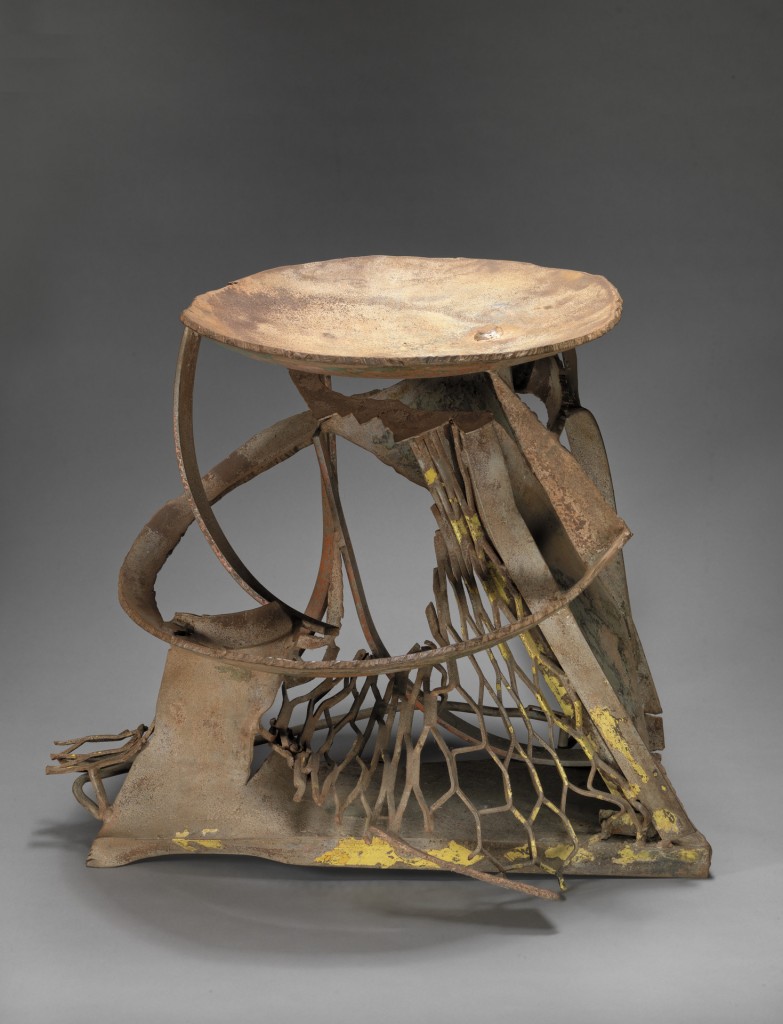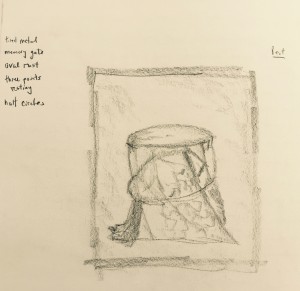Practicing visual literacy skills throughout the year opens opportunities to explore new combinations of reading and writing. In this exercise I wanted to explore creative writing using a film, a painting, and drawing. As a whole class we had recently watched a film. I spent some time looking through the online collections at YCBA and I chose this image due to the film’s content concerning the inner workings of a court life. The first part of the exercise was to draw the whole picture in their journals.
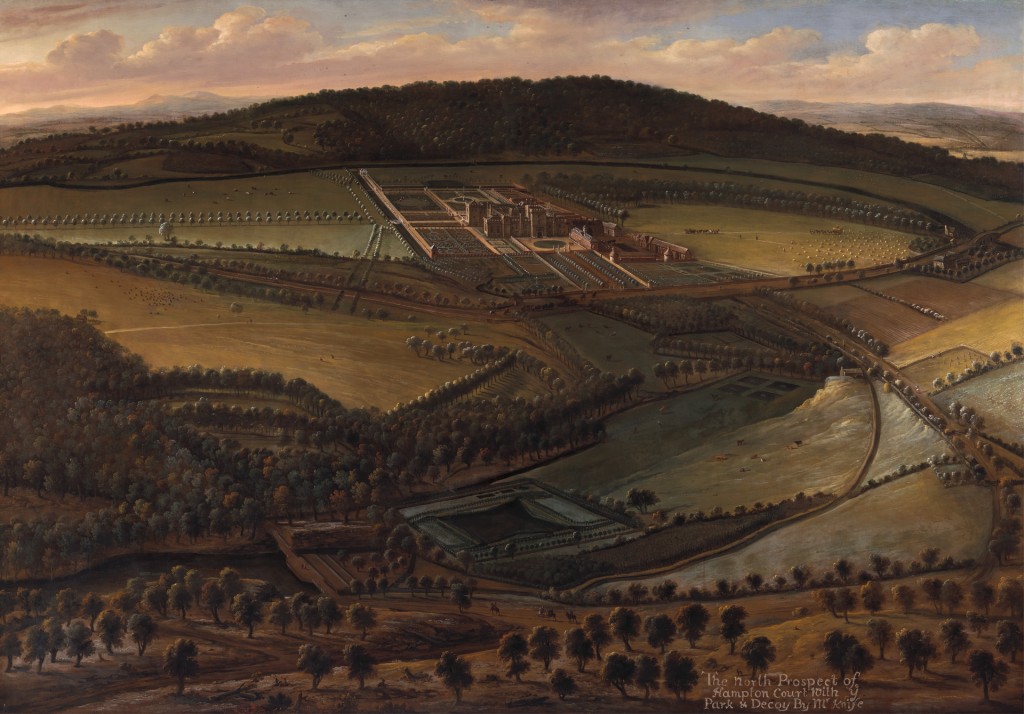
The following day we used the painting as the setting for a scene between characters in A Midsummer’s Night Dream and the film we watched. They had to pick at least one character from each story. Inside the painting they had to choose a place for their scene to take place and draw a mini-scene.
The story was opened ended, but had to be accurate to the characters in the stories. Each student chose their own characters, imagined what characters from two different stories would say to each other, and then chose the best visual location for the story to take place.
The creative writing prompt gave them very specific tasks. Each student had to draw the whole, but then within that whole had to choose a specific location that would be meaningful for their story. The writing had to construct a story with characters from two different stories (and mediums) and place these characters (in character) into a third space. Within these requirements the students were free to imagine and explore. Although some students chose similar characters, no one story was the same.
–James Shivers

